 for the install. They did a great job. They were clean and easy to work with, and they were very flexible with their scheduling and helped us to keep working toward our deadline by being flexible.
for the install. They did a great job. They were clean and easy to work with, and they were very flexible with their scheduling and helped us to keep working toward our deadline by being flexible. Lynn Woodward Electric. They were quick, clean and very reasonably priced.
Lynn Woodward Electric. They were quick, clean and very reasonably priced.
We installed plants today and things should be pretty much wrapped up on Monday when the pergola is installed. The only thing we will have left will be the retractable shades that are going on the structure. Four days ahead of schedule!
Trees are frequently used as both walls and ceilings for outdoor living spaces. Establishing trees correctly is a long process that will yield great benefits years down the road. I like to say that we can enjoy our lawn, annuals and perennials, our children can enjoy our shrubs, and our grandchildren can enjoy our trees.
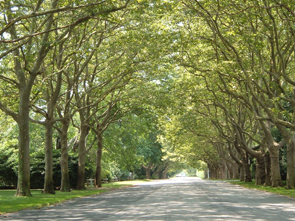 According to Dr. Edward F. Gilman of the University of Florida, the foremost authority on arboriculture in the country currently, the proper pruning and shaping of your trees takes 25 years to accomplish. His website provides step-by-step procedures for pruning your trees and shrubs.
According to Dr. Edward F. Gilman of the University of Florida, the foremost authority on arboriculture in the country currently, the proper pruning and shaping of your trees takes 25 years to accomplish. His website provides step-by-step procedures for pruning your trees and shrubs.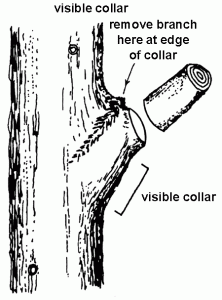 I recommend starting with the link ‘Design a Plan’ located at the bottom of the page. His website also has several other useful links for designing your landscape in Utah or anywhere else in the country. So browse the website and utilize the tools there to help you design your own outdoor living space.
I recommend starting with the link ‘Design a Plan’ located at the bottom of the page. His website also has several other useful links for designing your landscape in Utah or anywhere else in the country. So browse the website and utilize the tools there to help you design your own outdoor living space.
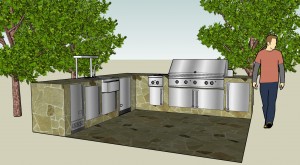 This rendering shows a complete kitchen outside with everything you need to prepare your whole meal. As a bonus, there is plenty of room for your friends and family to join you outside in your Outdoor Kitchen to socialize while you prepare the meal.
If your Outdoor Kitchen is simply a barbecue on your deck or patio, then you are missing out on the conveniences and comfort of an outdoor living space.
Add the walls and ceiling, like we did here with the counter and the trees, and then add the conveniences for the space, like the sink, side burner, fridge, ice maker and cabinet space, and you have a complete, convenient and comfortable Outdoor Kitchen.
This rendering shows a complete kitchen outside with everything you need to prepare your whole meal. As a bonus, there is plenty of room for your friends and family to join you outside in your Outdoor Kitchen to socialize while you prepare the meal.
If your Outdoor Kitchen is simply a barbecue on your deck or patio, then you are missing out on the conveniences and comfort of an outdoor living space.
Add the walls and ceiling, like we did here with the counter and the trees, and then add the conveniences for the space, like the sink, side burner, fridge, ice maker and cabinet space, and you have a complete, convenient and comfortable Outdoor Kitchen.
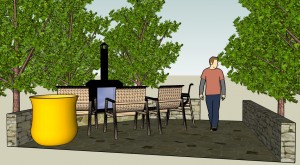 By adding walls and a ceiling–real or implied–like we did in the rendering here to the left, with the sitting wall and trees, and by accessorizing the space, like we did with the chairs, fireplace and pot, the space is transformed into an outdoor living space that is very comfortable to hold social gatherings.
The area becomes even more convenient if it is placed close to the home and has access to power and perhaps a source for music to enhance the ambience of the space.
By adding walls and a ceiling–real or implied–like we did in the rendering here to the left, with the sitting wall and trees, and by accessorizing the space, like we did with the chairs, fireplace and pot, the space is transformed into an outdoor living space that is very comfortable to hold social gatherings.
The area becomes even more convenient if it is placed close to the home and has access to power and perhaps a source for music to enhance the ambience of the space.
The last problem to address in your outdoor living space is heat-stress. Heat-stress is not a problem with a deep root system, but can be difficult to deal with for a shallow root system. Heat-stress commonly causes you to fall behind and never catch back up in the battle to keep your lawn healthy and green.
The problem is that the shallow roots can dry out so easily in the hot sun. Also, bluegrass is a cool season turf, which means that it begins growing when the temperature coming out of the winter reaches the high 30’s or low 40’s and goes dormant when the temperature reaches the mid 80’s. Dormant is not dead, but it is frequently brown.
This means that when you are behind in keeping your lawn looking nice and green, and the temperatures are in the mid 80’s or higher (end of May on), you will not be able to catch up because the grass is dormant.
The only way to beat this problem that I know of is to cool down the ambient temperature at the crown of the grass. This is commonly done by over-watering and shallow watering and results in a lot of waste water.
Without understanding everything explained previously, it is very difficult to convince a person with a green lawn that is over-watering and shallow watering that they can cut back drastically on their watering. Hopefully this process makes sense to you if you are guilty.
The solution to heat-stress is called syringing and was introduced to me by Dr. Frank Williams of Brigham Young University. Syringing is done by using one or two programs on the clock and setting the water to come on several times during the hottest part of the day, but just for very short times (2-3 minutes for rotors and 1 minute for pop-ups).
This will have the same effect of cooling down the ambient soil temperature and bringing the turf out of dormancy without over-watering or shallow watering. I have probably had more success in helping out lawns with this strategy than any other strategy previously mentioned. Keep in mind that this is only a technique required for a shallow root system, because a deep root system will not suffer from heat-stress.
One might argue that you should conserve water and let the turf go dormant in the hottest months, but that poses several problems, the first of which is simply the loss of function of a dormant lawn.
Another problem with that argument is that you stand to lose two to three months worth of good healthy root growth without the healthy and active blades above ground doing their job. In my experience, water invested in syringing now will result in an even healthier and more drought tolerant lawn in the future which will need less water in the long run.
Try out these strategies and enjoy your results. Remember to be patient because it can take a full, healthy growing season to establish a good root system. Don’t become too confused by anything mentioned previously and know that sprinkler clocks are really not that complicated.
All clocks have three big elements in common and hopefully a fourth. The three big elements are Days to Water, Run Time, and Start Times.
Hopefully your clock has the fourth element, which is separate Programs. The Run Time and Start Time were addressed by the discussion of shallow watering, the Days to Water was discussed by the over-watering discussion, and Programs was mentioned in talking about heat-stress—but can also be beneficial in separating zones for different watering needs.
When buying a clock, I really don’t think brand matters too much, but I would definitely look for a clock with these four components and, preferably one that allowed you to set the days on a 14 day or 28 day cycle as opposed to just weekly, but that is the least of the priorities.
Below is the landscape design for the Allen Residence Outdoor Dining Room in Hooper, Utah. The Allens will get a lot of use out of this outdoor living space. The flooring is a tumbled Belgard paver and the walls and ceiling are a white vinyl pergola. We included plenty of space around the room for a fire pit and for dutch ovens and a barbecue. We also ran electrical to the South of the space for them to plug in a small water feature they purchased.
I also designed a flower bed for them in the front yard complete with a fifteen foot flag pole.
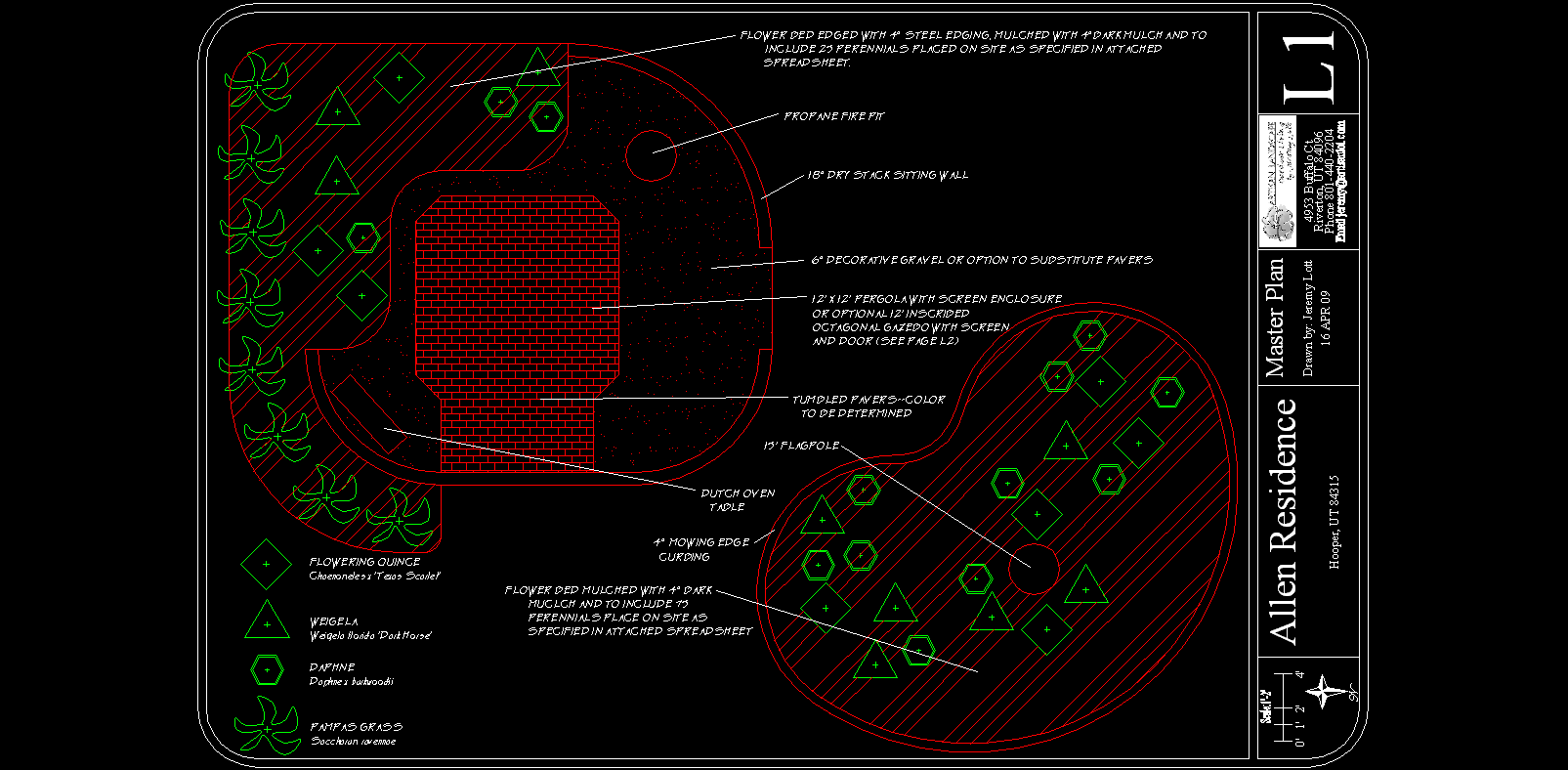
Over-watering your outdoor living space is equally as destructive as shallow watering and ends up with similar problems—shallow roots. Again, surface roots are temperamental and result in an unhealthy lawn. Additionally, over-watering can cause yellowing in the lawn, which is sometimes confused for a lack of water and results in increased over-watering.
Another problem caused by over-watering is the deprivation of the soil profile of oxygen, resulting in the death of beneficial organisms. Commonly this will be marked by several uneven bumps developing in the lawn caused by the exit holes of worms trying to make it to the surface to breathe.
Fixing the bumps is a timely process, but is possible and involves a regiment of aeration, mulching instead of bagging your grass clippings, and applying a thin layer of fine-grade mulch. The solution to the problem is to spread out the frequency of your watering. Never should you need to water every day, even with new sod or seed. I will address this more later.
During the hottest months of the year—July and August—I have been able to water some lawns as infrequently as every 7-10 days. You need to have the right type of soil and a deep root system to do this, but it is very possible.
The best way to gauge how often you need to water is by testing your soil frequently, once again using a screwdriver or soil probe. You need to water when the soil is dry down about 25-30% of the root depth. Let it dry out even more if you are brave, but keep an eye on the color and turgidity of the grass.
If your grass starts to go darker or lay down, it is on the verge of drought-stress and you need to water. A good way to test is to walk across your lawn, if you can look back and see deep footprint impressions, you need to water again. Even with a very shallow root system, do not water more than every other day or you will over-water and suffocate your lawn.
One more note on the frequency of watering. You may find, from testing, that in order to fill your root system you need about 2” of water for a deep, heavy clay. Be careful about turning off your clock when it is rainy. Check the soil and watch the lawns color and turgidity because rainwater is never enough in Utah to fill the soil profile.
According to www.maps.com, most of the inhabited areas of Utah only receive 8-16” of water a year. Yes, that’s right, a year! If you are applying about 2” of water per application, that is somewhere between one and two full months worth of rainwater—in other words, rain is not enough to keep your lawn healthy.
A nice patch of grass is a necessity for many outdoor activities. I usually design the grass as a separate outdoor living space. The trick is to be able to keep your patch of grass looking healthy in drought conditions and still be able to conserve on water. There are as many philosophies about how to do that as there are people who are watering their lawn.
I do consider myself an expert and, through my research and experience I have come up with my own philosophies which have proven quite successful. For instance, I was able to cut back the water usage on one particular apartment complex in the Denver, Colorado area by 700,000 gallons during the month of July—the hottest month of the year—kept the lawn looking amazing, and still followed all of the very strict watering regulations imposed by the local government. Since that time, my water scheduling abilities have improved even more.
The number one most important thing in establishing a drought tolerant lawn is root depth. If you can develop a deep root system, you can water less frequently and you will use less water to do so.
I feel it important to mention that, to develop a deep root system, you need to implement other cultural practices besides proper watering—although proper watering will have the biggest impact on the root depth. Some of these practices include mowing at 2.5” or higher, a proper fertilizing program, and yearly aeration. You might also consider good, fine-grade mulch for your lawn in order to amend the soil and improve the soil structure. All of these things will help your watering practices to be more effective.
There are several things to keep in mind when scheduling your watering. I think it is best to address these things by introducing the problems associated with solutions so that you can understand the process of scheduling and be able to do it yourself. Some of the problems are shallow watering, over-watering, and heat-stress on the roots. I will address each of these problems in a separate blog in this three part series.
Shallow watering is a problem because the roots of your grass will only grow where the water can be found. Roots that are shallow require more frequent watering and are prone to heat-stress.
Shallow watering is more commonly a problem in heavier clay soils than in sandy soils, though it is feasibly possible to water too little in sand. The cause of this problem is actually quite ironic because it is more often caused by run times that are too long as opposed to run times that are too short.
The soil is like a sponge and, when fully saturated, it can not accept more water. Thus, when you continue to apply more water to a saturated soil, you are only watering the sidewalk, driveway, or low spots in your yard, because the surplus runs off and follows the path of least resistance.
One way to help this problem is to apply a thin layer of fine-grade mulch as a soil amendment to the surface. This will both help retain the water now, and improve the soil structure so that it can accept more water in the future.
The watering practice to implement here is called cycle/soak. What that means is you fill the soil to saturation, and then wait for the water to soak down into the soil profile for a while, and then water again.
This will slowly deepen the water level in the soil and therefore provide deeper water for the roots to chase down, deepening your root system. This is done by first, observing how long you can run your sprinklers before it begins to puddle or run off on to the surrounding surfaces, then waiting for at least an hour and testing the soil by inserting a long screw driver (a soil probe is ideal if you have one) to see how deep the water soaked down.
The goal is to water down to about one foot. If the first application of water falls short of the target depth, set a second and/or third start time on your timer to water. Remember that as your roots are developing and growing deeper, any water that is more than about one to two inches deeper than your roots is wasted. Conserve water by knowing how deep your roots are and only watering one to two inches deeper than your roots, with about one foot being the final goal. Following these steps will help to prevent shallow watering.
The philosophy I employ for designing informal flower beds for Outdoor Living Spaces comes from Peter Lassig, who was the head gardener at the Salt Lake City Temple grounds. I have included here my new podcast which explains the very basics of how to design an informal flower bed.
Continue reading Informal Flower Bed Designs